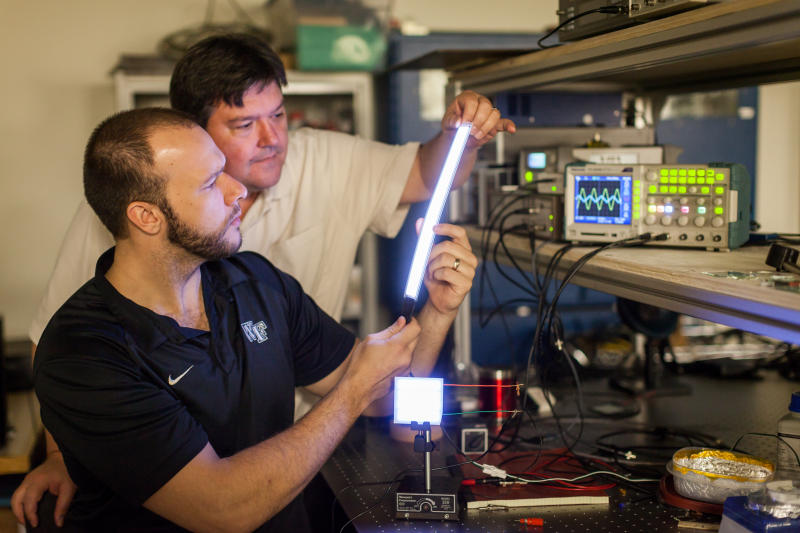Podcast: Play in new window
BOB HIRSHON (host):
Seeing in a new light. I’m Bob Hirshon and this is Science Update.
Old-fashioned light bulbs waste energy. Fluorescents are ugly and they buzz and flicker. LEDs are expensive and look bluish. But none of these problems are true of the new field-induced polymer electro-luminescent light, or FIPEL, developed by Wake Forest University physicist David Carroll. The shatter-proof lights work by creating a polarized electric current.
DAVID CARROLL (WakeForestUniversity):
We apply a field between two plates, one plate is transparent, the other plate is a reflector. And we put a piece of plastic in there which is very sensitive to that field, and it glows when you apply the field to it.
HIRSHON:
By mixing in luminescent dyes, Carroll’s team can tweak the glowing polymer to create any color in the light spectrum. They’ve also made it efficient enough to light a room or an office for up to 50,000 hours, at a fraction of the cost of fluorescents. I’m Bob Hirshon for AAAS, the Science Society.

